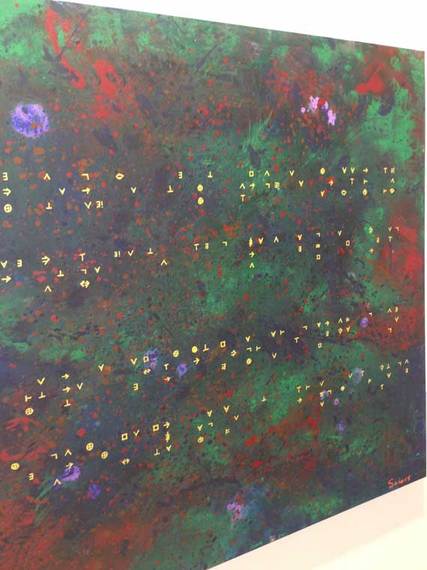
I was walking in lower Manhattan when I ran into a colleague. We got to talking, and he innocently asked, "So, what are you doing these days?" I told him, "I'm an artist." He was caught off guard, since he knows my background. The truth is, I've always been an artist, just labeled a "mathematician."
From theoretical math to running a hedge fund, in the eyes of others, my world has always focused on numbers. As I described my new craft to my friend, what seemed so natural to me was a stretch for him. Math and art appear to be diametric opposites -- one describes awe-inspiring beauty and the other boring word problems. But a mathematical artist is not an oxymoron -- it's quite natural.
The Ancient Greeks used geometry to drive their aesthetic in symmetry and balance. Renaissance Masters introduced perspective, a mathematical exercise in angles, to achieve realism and depth and were fundamentally influenced by the expanding fields of the sciences. For these learned men, math, science, and art were inextricably intertwined. However, the prevailing sentiment today is that math and art live at different ends of the academic spectrum. But for me, they are linked in their pursuit to describe the world around us in the most beautiful way possible.
Keen mathematical insight involves recognizing how seemingly disassociated concepts and ideas can be related and synergized to address mathematical truth. A 20th century luminary remarked, "Good mathematicians see analogies. Great mathematicians see analogies between analogies." In fact, the main technique in algebraic topology, the field of math I studied, was recasting "geometric" questions into another field of math. This "thinking outside the box" greatly enhances the topologist's toolbox, and isn't this the definition of artistic creativity?
Keeping in that vein, my artwork merges mathematics with my personal philosophy to find a new, visual way of exploring human nature. My art is imbued with math in two major ways.
First, the basis of the majority of my work subjects aspects of the human condition -- whether it be love, morality, the nature of art, or the way we handle obstacles -- to mathematical scrutiny. I attempt to develop a logical framework from which to distill down and then sum up complex human ideas and address truth, just as mathematics is applied to other elaborate problems. For example, since my mathematical background is in topology, I apply some of the concepts associated with this field into the piece titled Equality with the intention of provoking the viewer's thoughts. In the painting, each of the objects in the room appears very different, but they are in fact, topologically equivalent (observe they can be stretched and deformed to resemble each other without puncturing or tearing the shape). The perspective in the room is defined by lines whose intersection spells the word "human" in Braille. The logical message is that even though we all look different, we are all equal at the very root of our natures.
Second, I take the connection between mathematics and art even further by creating images the way a mathematician would formulate an equation to concisely represent his concept. Take Euler's Identity e^{i \pi} + 1 = 0. This most beautiful of equations combines the five most important numbers and the three core operations of math: addition, multiplication, and exponentiation (note subtraction and division are sisters of the first two). Much of the beauty of this mysterious truth statement lies in its simplicity. So mathematics provides a minimalist language through which to express universal truths. I determine how to visually illustrate my concepts in the exact same way. The beauty in my art does not lie in the complexity of the imagery, but in how simply I can represent exceedingly complex ideas.
That's where my creative challenge really lies -- in creating a minimalist visual representation of so many layers of thoughts and associations. I logically tie ideas together and distill them down into their most basic visual form. This is most representative in my work titled Voice of Reason, which pays homage to Martin Luther King, Jr. whose voice I believe transcended the spoken word and became a form of audible logic because it was so powerful and true.
Through a mathematician's eyes, I want to unmask the world and share creativity and beauty. Mathematics operates on very simple forms, but offers consistently deeper and deeper layers of meaning. Because my artwork uses the same language, it shares the same qualities. The result is a work merging math and art. What could be more natural?


